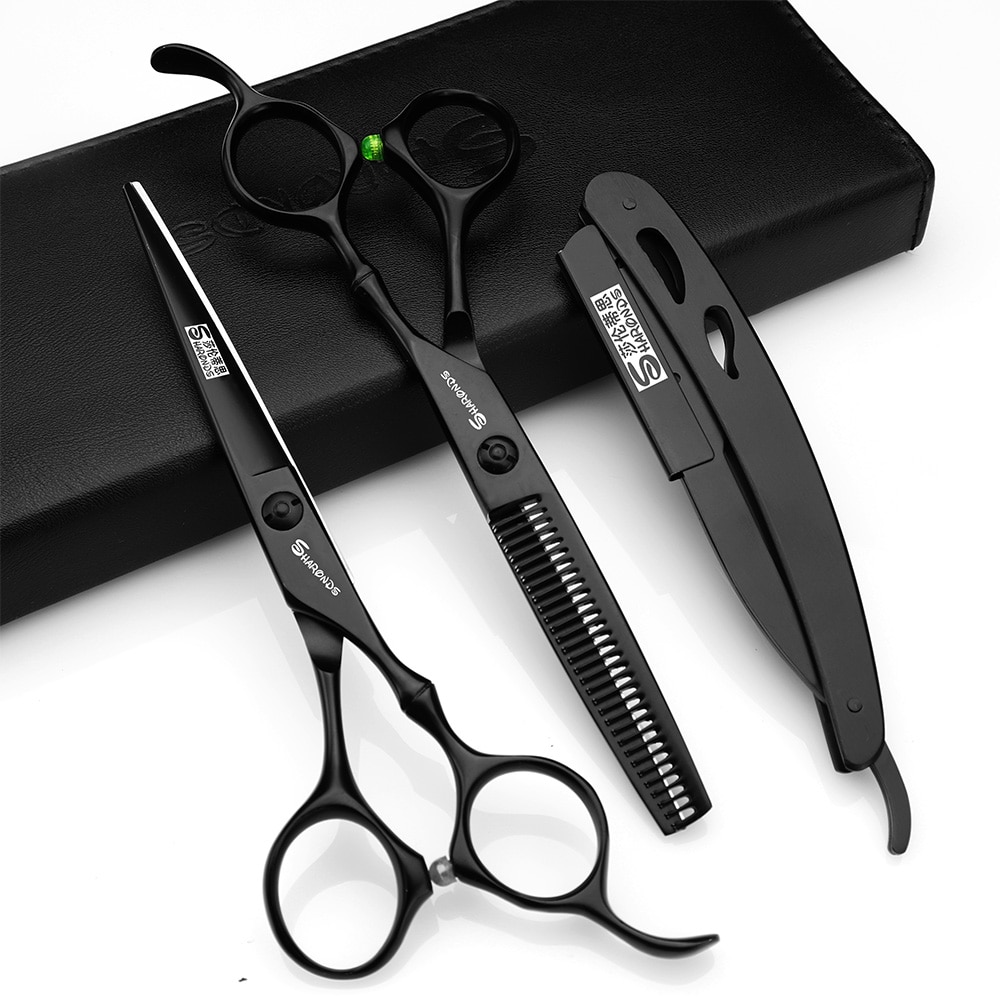
Understanding which tool to use when cutting hair is paramount in producing desired results; being aware of all available tools is vital.
Shears
Shears were explicitly created to cut hair, typically featuring a tail-like tang or brace attached to one of the finger holes for added control and with ergonomic properties designed to minimize stress on stylists’ hands, arms, shoulders, and backs to prevent carpal tunnel syndrome, tendonitis, and bursitis.
Scissors
Scissors and shears are essential tools in any hair stylist’s toolkit, though their size may initially seem intimidating. But with practice, they become easier to hold. hair scissors must be stored correctly to reduce client discomfort while optimizing the efficiency of use. Smaller blades are perfect for blending and softening blunt ends, while wider shears with seven to fifteen teeth are great at removing extra weight from your locks. To maximize the use of your shears, the optimal way to use them is to position your thumb in one of the larger holes and your ring finger on its tail-like tang at one hole. This will allow for optimal control, reduced wrist and arm strain, and even resting four fingers with your thumb on them for further stress reduction.
Clippers
Hair clippers are an essential tool in the hairdressing world, used to cut hair by clipping it. While scissors and razors also cut hair, hair clippers offer something extra. Being familiar with what these tools can do and their capabilities is critical to DIY haircuts, trimming your guy’s neckline in between haircuts, or understanding your stylist’s instructions more clearly. hair clippers can give various haircuts, including fades, skin fades, comb-overs, or taper. However, they’re typically reserved for shorter styles like buzz cuts and undercuts. The best clippers provide you with a range of guards to attach to the blades for customized cutting lengths. Typically numbered from 0-8, smaller guards produce shorter cuts. Some clippers also come with extra small trimmers for greater precision when trimming hair in tight spaces on your head. All blades must remain sharp; otherwise, this could compromise the overall quality of your haircut and lead to poor results.
Trimmers
hair trimmers are highly similar to clippers but feature narrower and shallower teeth for closer cutting nearer the skin. As such, they’re great for delicate detail work like fades and smoothing edges on shortcuts, sideburns, necklines, or beards. Some barbers use them to carve tattoo-inspired shapes into clients’ beards, create designs, or carvecarve out tattoo-like shapes in clients’ beards. Thinning shears (also referred to as blending shears or texturizing shears) with multiple teeth on each blade can also help soften and blend demarcation lines and pair well with texturizing shears (known as texturizing shears or texturizing shears), which allow stylists to remove more than half of hair in one or two cuts while adding texture and volume – ideal for creating smooth and polished haircuts! Pair these shears with texturizing shears (thinning or texturizing shears or texturizing shears). This allows stylists to trim every section evenly, ensuring smooth and polished results when completed!
Straight Razor
Straight razors have long been considered one of the premier shaving tools, providing close, accurate shaves while simultaneously trimming facial hair. While using one does require some skill and talent, beginners can often master it quickly. Before purchasing a straight razor, do your research. Cheap ones may shave well but require extensive effort to maintain their edge; therefore, they may only last for a while. When searching for quality blades made of carbon steel (requiring care after each use, e.g., camellia oil or petroleum jelly to prevent water damage) or stainless steel, consider which will last longest and choose accordingly. Straight razors made by quality brands produce a ringing sound when lightly touched with your fingertip and need regular maintenance with leather straps and sharpening stones to maintain their edge. If you’re new to straight razors but want something less sharp for practice purposes, consider replaceable-blade cut-throats that take standard double-edge razor blades; these will allow you to build up experience gradually.

